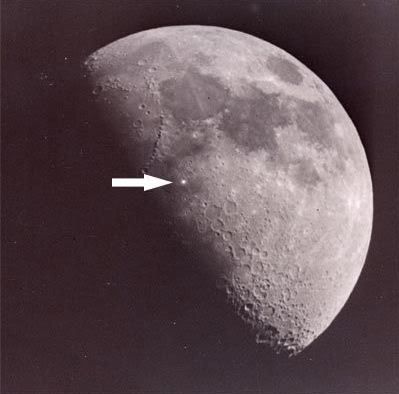Optical Telescope Celestron C-8 "-Newtonian, plossl 20mm, 2x Barlow
Mount: CG5 (EQ5)
Device: Sony CX105 at 8x optical zoom
Total zoom: 800x
Filter: no
Date: 12/05/2011
Location: Baia Mare, Romania
Processing: video capture, FastStone Image Viewer
In the morning of November 15, 1953, an amateur astronomer from Oklahoma, USA, named Dr. Stuart Leon, photographed what he believed to be a massive white ball of fire that was vaporizing, located near the center of the Moon, 16 km south-east of the Pallas crater. If his theory is true, he would be the first and only man in history that has witnessed the impact of an asteroid crashing on the moon's surface.
But today the mystery was solved (just a theory), because the spark could be caused by leakage of gaseous materials within the Moon. This phenomenon is called "transient lunar phenomenon", or TLP.
In photos above are Pallas (50 km) and Murchison (58 km), region in which the spark was caught by the astronomer Stuart.
 |
| The image of a "transient lunar phenomenon" of 1953.TLP is the light from the center. Credit: Stuart Leon, Columbia University |




 Saturday, October 15, 2011
Saturday, October 15, 2011
 Unknown
Unknown






 Posted in:
Posted in: 


0 comments:
Post a Comment